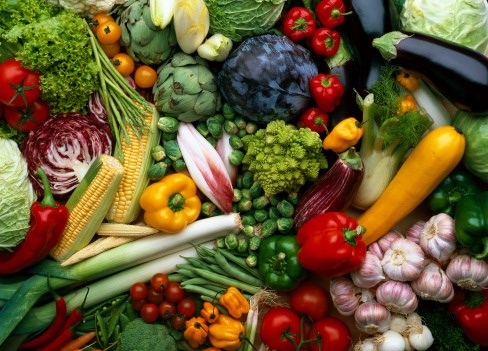Vancouver has always been on top of local food movements, because, let’s face it, most Vancouverites have an inner foodie that can tell you the many different ways that they have prepared kale.
Living here, we are in a healthy lifestyle bubble. Vancouver is known for the 100 Mile Diet, farm-to-table movements, and long-running farmers’ markets among many other wonderful foodie things. Yes, the local movement is in high-gear here. It’s just getting bigger and more popular, and for many of us, it’s just a part of everyday life.
Eating local means eating foods that are in season, making them fresher and more nutritious. Produce that is picked when it is ripened (and not a minute before), allows your body to take advantage of the flavours and nutrients. Fruits and veggies that are exported have to travel a long way to get to our plates.
Unfortunately, some companies have found a way to compensate for this.
Let’s take a look at the tomato, for example. According to Thomas F. Pawlick, author of The End of Food, most tomatoes sold in supermarkets are actually picked before they are ripe, just as they begin to turn color. At the time of selling, they are then artificially ripened by a process which involves gassing the green tomato with ethylene. This gives the tomato the colour we all know so well. However, it is not the same as if it were naturally ripened, especially in terms of flavour and texture.
Have you ever bit into a bright red tomato that is rock hard? Now you know why. Needless to say that eating more fresh, local foods can help you avoid the tennis ball-textured tomato and its equally dense counterparts.
According to GetLocalBC.org, the average North American meal travels 2,400 km from the farm to the plate. But as the distance food travels decreases, so does the need for processing and refrigeration to reduce spoilage. When we buy food locally, we are reducing the usage of fossil fuels, which contribute to air pollution and other negative environmental effects. And of course, buying local helps local farmers and businesses to thrive.
Your dollar can actually create a healthy food system, reduce your carbon footprint and help support the local economy.
Here’s how you can stay local:
Farmers’ market
This is a great way to support local and meet your local growers. Farmers’ markets offer a variety of fresh foods that our lovely coastal region has to offer. Also, it’s a great way to spend an afternoon outdoors. We are still in winter market season but, soon enough, there will be tons of markets popping up, making it more convenient for everyone to get their fresh produce party on.
Join a CSA
Community Supported Agriculture supports farmers by having people buy a share in their produce at the beginning of the season, in exchange for deliveries of fresh produce. It’s an awesome win/win situation, and a tried-and-true system. This would be a good time of year to start doing your Internet research on some CSAs that you can be a part of this season.
Grocery stores
Read labels on fruits/veggies, etc., to see where they are from. We have so many amazing local companies and growers that produce quality food. This is also one of the easiest ways you can vote with your wallet and show local chain stores that you want even more local food.
Grow your own
We are so lucky with our left coast, mild weather that we can grow food all year round, even if the winter months seems to only bring more kale and root veggies than we can count. It’s still delicious, nutrient-dense food that you can get super creative with!
Preserve food
Stocking up on foods throughout the spring/summer months and preserving them for the winter is a great tool for eating local all year round.
Farm-to-table restaurants
There are so many awesome restaurants to discover here that celebrate the best of what BC has to offer. Great lists of farm-to-table restaurants have been gathered by sites like We Heart Local BC,
Urbanspoon, About.com, and more.
Kale Dip
1 bunch kale, washed and tough stems removed
3 medium garlic cloves, peeled
3 tbsp toasted sesame seeds
4 tsp apple cider vinegar
½ cup Avalon plain organic yogurt
Juice of one lemon and zest
A pinch of cayenne or chili powder
2 tbsp olive oil
Sea salt to taste
*optional-add ¼ to ½ cup of some of your favorite grated cheese. Little Qualicum and Avalon are my favorite local cheeses. Parmesan, ricotta or a blue cheese go great with this recipe.
To prepare:
Sautee kale
Blend all ingredients together in a food processor and serve with veggies or crackers.



